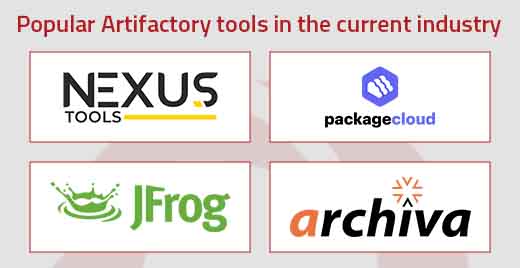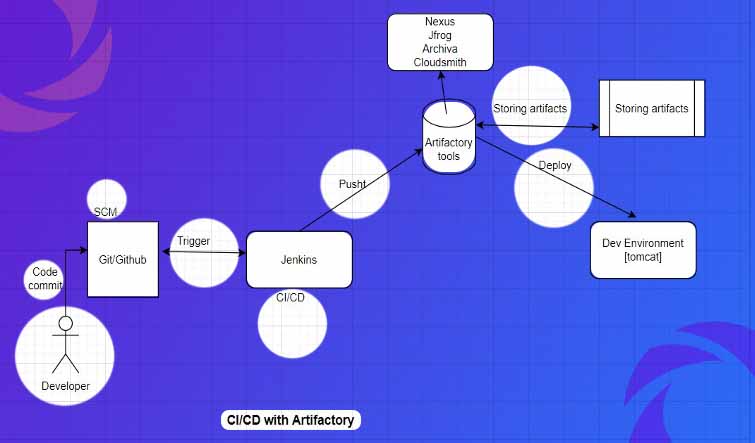Software Engineering | 02 Nov 2022 | 9 min
Introduction to Artifactory

Chances are that you have been on the lookout for a way to help your team identify and incorporate the right versions of artifacts into their work with ease. Meet Artifact repositories – stellar applications that have become vital for rapid releases.
In this blog, I’m going to explain what an artifact repository is, the types of repositories, benefits of Artifactory, and popular Artifactory tools in the industry today. Apart from this, I have included a case study that will deepen your understanding. Let’s get started!
It can manage our end-to-end artifact lifecycle and support different package management systems like Python, Ruby, R, Java, JavaScript, and C/C++. What’s more, it provides dependability to our CI/CD workflow. It stores all the artifacts (JAR, WAR, EAR) needed for a build process and it also stores docker images.
Some Artifact repository tools are Nexus, JFrog, Package cloud, Archiva, and CloudSmith Package. I will introduce you to these tools a little later in the blog.
To start with, let’s take a look at the types of repositories.
Local repository: A physically managed local repository in which we can deploy artifacts.
Remote repository: It has a remote URL; the artifacts can be stored in the repository according to various configuration parameters that controls caching and proxy.
Virtual repository: A repository combines local and remote repository called virtual repository, it has a common URL used to create a controlled domain. We can search and resolution of the artifacts.
Now that you are acquainted with the types, allow me to explain some key benefits of using Artifactory.
Now let’s get acquainted with some Artifactory tools that are widely used in the industry today.
Some popular Artifactory tools in the current industry are as follows:

Nexus can manage all the software artifacts that are required for our development, deployment, and provisioning. We can share the stored artifacts to other developers and end users, it controls access to and for the deployment of each artifact in your organization from a centralized location. It works with Maven artifacts. It provides support to release artifacts and extends support snapshots as well.
JFrog is a universal artifact repository manager that fully supports software packages created using any language and technology. It is integrated with all the major CI/CD tools for end-to-end automation, and this makes it easy to keep tracking artifacts from development to production.
Using JFrog, we can work on huge files within a short span of time, and it supports the Gradle build tool.
It is one of the best DevOps repository tools, it ensures enterprise grade repositories like Debian, Maven, Python, Ruby, Vagrant, and more. We can manage all our universal dependencies and artifacts within just one repository. This ensures that there is no latency, and we need to pay for what we have used.
Archiva is from the Apache family of software for Artifactory management tool. It is an extensible repository tool that takes care of the enterprise-wide build artifact repository. It saves loads of time, because there is no need to download any of the binaries from internal. But it does not download from the Archiva repository on our site. It centralizes the whole management process.
Allow me to explain further with the help of a case study.
Case study:

Points to be noted:
With the help of triggering methods in CI/CD tools, we can push and pull the artifacts automatically whenever changes happen in the SCM repositories.
Send us an email with your thoughts about this blog and visit us at Nitor Infotech to learn more about what we do in the software world!

we'll keep you in the loop with everything that's trending in the tech world.
